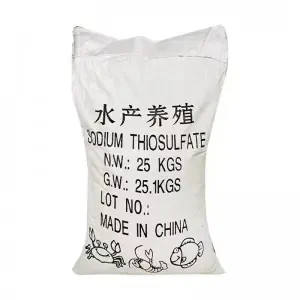



Sodium Hydroxide Flakes for Crafting High-Quality Handmade Soap
Understanding Sodium Hydroxide Flakes for Soap Making
Sodium hydroxide, commonly known as lye, is an essential ingredient in the soap-making process. Particularly, sodium hydroxide flakes are favored by many artisans for their ease of use and precise measurement capabilities. Whether for crafting luxurious homemade soaps or for industrial applications, understanding the properties and handling of sodium hydroxide is critical for successful soap-making.
What is Sodium Hydroxide?
Sodium hydroxide is a highly caustic substance that appears as white, odorless flakes or pellets. In soap making, it plays a pivotal role in the saponification process—the chemical reaction that occurs when oils or fats combine with a strong alkali, resulting in the formation of soap and glycerin. The use of sodium hydroxide enables a wide variety of oils to be transformed into soap, providing a diverse range of textures, scents, and properties.
The Importance of Sodium Hydroxide Flakes
Sodium hydroxide flakes are particularly advantageous for soap makers due to their distinct properties. These flakes are quicker to dissolve in water compared to their granular counterparts, ensuring a smoother mixing process. This is crucial because any undissolved lye can lead to uneven saponification and potentially harmful results in the final product. Additionally, the flaked form allows for easier measurement and handling, minimizing waste and ensuring accuracy in soap recipes.
Safety Precautions
When using sodium hydroxide, safety should always be the top priority. This substance is highly caustic and can cause severe burns upon contact with skin or mucous membranes. Therefore, soap makers should always wear protective gear, including gloves, goggles, and long sleeves, during the handling process. Furthermore, it is vital to work in a well-ventilated area or even outdoors to avoid inhaling any fumes that may arise when mixing lye with water.
When mixing sodium hydroxide flakes with water, it’s essential to always add the lye to the water, never the other way around. By doing so, you prevent a dangerous reaction that can cause the lye to splash. Always use a heat-resistant container, as the mixture will generate heat and can exceed boiling temperatures.
sodium hydroxide flakes for soap making

Measuring and Mixing Lye
Accurate measurement is key to successful soap making. The amount of sodium hydroxide required varies based on the type and quantity of oils used in a recipe. There are numerous online calculators available that can assist with determining the correct lye-to-oil ratios, allowing for precise formulation and ensuring that all oils are fully saponified.
Once the correct amount is measured, dissolve the flakes in water, stirring gently until completely dissolved. The resulting lye solution should be handled with care; it will be hot, and the solution’s caustic nature is still present until it fully interacts with the oils.
Crafting Soap with Sodium Hydroxide
Once the lye solution cools to an appropriate temperature, it can be combined with your chosen oils. The mixture must be blended until it reaches “trace,” which is the point at which the soap mixture thickens and leaves a trail when drizzled over itself. This is the moment to add fragrances, colorants, and any additional ingredients you desire.
After reaching trace, the soap mixture is poured into molds and allowed to solidify. Depending on the recipe and the ingredients used, the soap can take anywhere from 24 hours to several weeks to cure fully. During this time, any excess lye will neutralize, resulting in a safe and delightful final product.
Conclusion
Sodium hydroxide flakes are a fundamental component of soap making, allowing artisans to create unique and custom products. By following safety precautions, accurately measuring ingredients, and understanding the soap-making process, anyone can harness the power of lye to craft beautiful, functional soaps. Whether for personal use or for gifting, the joy of creating soap from scratch is a rewarding experience that opens the door to endless possibilities in personal care products.
-
Why Sodium Persulfate Is Everywhere NowNewsJul.07,2025
-
Why Polyacrylamide Is in High DemandNewsJul.07,2025
-
Understanding Paint Chemicals and Their ApplicationsNewsJul.07,2025
-
Smart Use Of Mining ChemicalsNewsJul.07,2025
-
Practical Uses of Potassium MonopersulfateNewsJul.07,2025
-
Agrochemicals In Real FarmingNewsJul.07,2025
-
Sodium Chlorite Hot UsesNewsJul.01,2025










